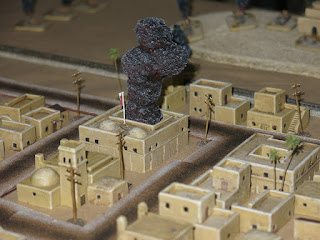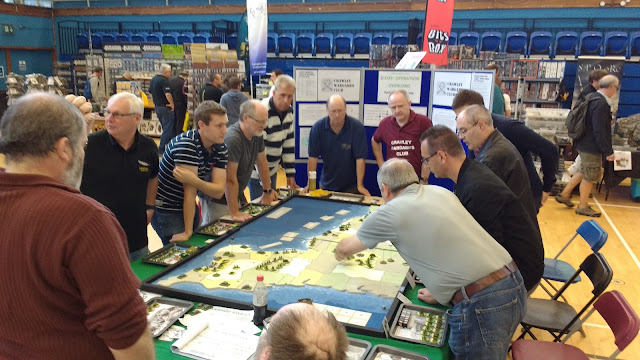I may have finally cracked. Certainly the wife is looking at me funny and I'm pretty sure she's ready to call the men in white coats to take me to the funny farm. Why am I destined for a padded cell you ask? Because for the last week and a bit I have been making (not entirely successfully I may add) Dust Cloud models for my desert vehicles.
OK lets back up a little and explain the mad impulse that started this. Nearly every picture from the North Africa campaign featuring moving vehicles also shows long dust plumes billowing behind those vehicles. Just because its a game I see no reason why these shouldn't also be a feature of my tabletop battles. In fact I'm convinced that poor visibility resulting from dust should have a significant in-game effect that is largely ignored by most rule sets. I have read multiple accounts of tank crews that mention dust blocking their vision, getting in their eyes and generally making the job of spotting and aiming at targets all the harder.
OK lets back up a little and explain the mad impulse that started this. Nearly every picture from the North Africa campaign featuring moving vehicles also shows long dust plumes billowing behind those vehicles. Just because its a game I see no reason why these shouldn't also be a feature of my tabletop battles. In fact I'm convinced that poor visibility resulting from dust should have a significant in-game effect that is largely ignored by most rule sets. I have read multiple accounts of tank crews that mention dust blocking their vision, getting in their eyes and generally making the job of spotting and aiming at targets all the harder.

Flames of War does actually have a rule for dust clouds: Place a 2”/5cm diameter Dust Cloud marker behind each vehicle moving more than 4”/10cm in the Movement Step. If the vehicle moves later in the turn, the dust cloud moves with it staying on the same side of the vehicle, even if it changes direction (you can’t hide in your own dust!). Vehicles moving 4”/10cm or less do not create dust clouds. Remove all dust clouds from your vehicles at the start of your turn. Troops behind a dust cloud count as Concealed.
Its that last sentence that is important. Plumes of dust will effectively reduce line of sight to potential targets further afield. The dust will settle quickly but while it remains on the games table it can be exploited by the wily commander to shield the movement of other units.
I now have about 50 of these dust clouds which should be ample for my games. The next step is to put the new models next to the ones I made before and compare colours. I suspect this batch is a little bright but the difference between the two batches is probably negligible...but that is a job for another day.
















































